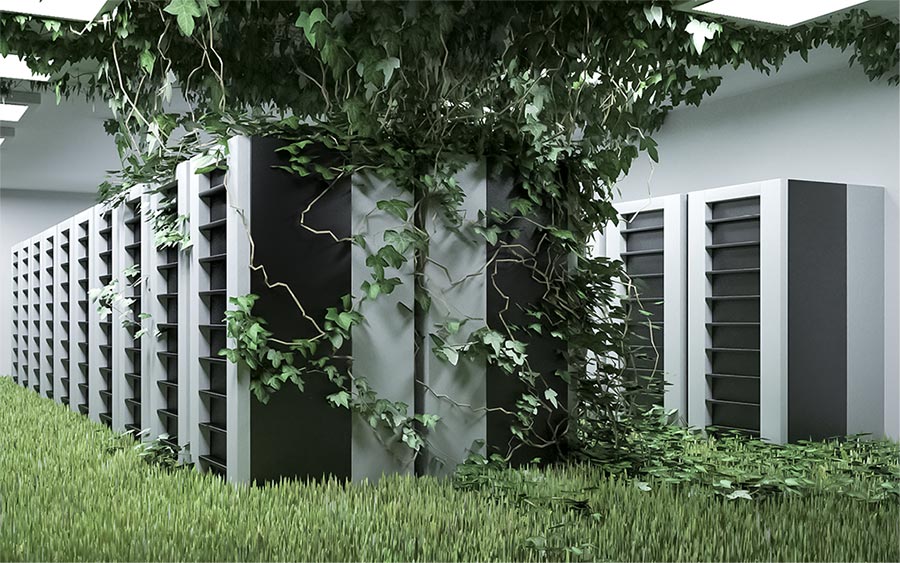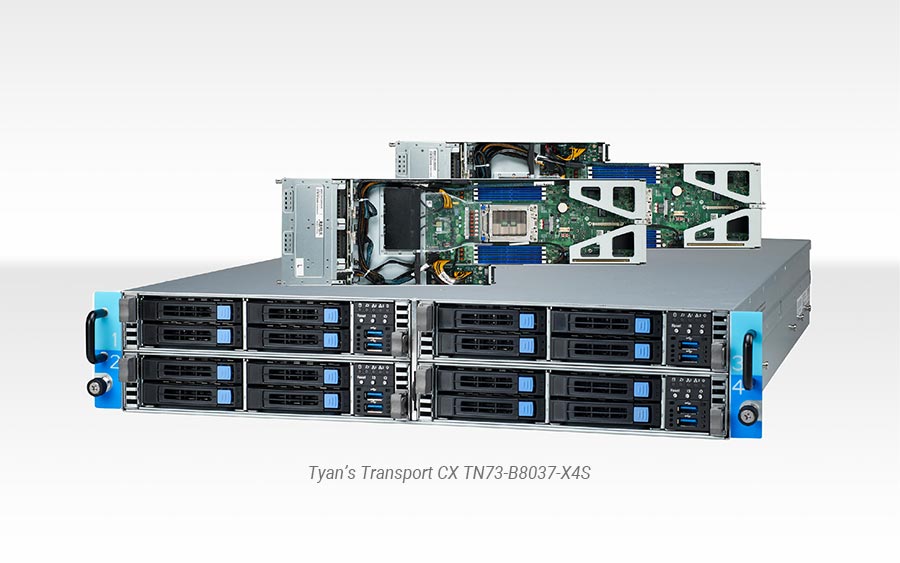How Tyan® and AMD can help 'green' your data center

The combination of new CPUs and smart server design gives data center architects more options to reduce power cons umption and increase efficiency.
In Data Center World's 2021 State of the Data Center Report [1], researchers noticed that the way data centers are designed and built is changing.
"Trends are indicating a broader focus on performance, density, and efficiency," suggests the report. "We found that more than half of respondents (58%) reported noticing a trend for organizations to move away from the public cloud and look to colocation or private data centers… Most (62%) report their rack density has increased over the past three years… [and] most respondents (65%) are seeing an increase in renewable energy utilization."
There are various ways to 'green' a data center, from using 100% carbon neutral, renewable energy providers to improving heat dissipation and optimizing airflow. Server consolidation is also an essential part of making data centers more efficient and reducing power consumption. However, a one-size fits all approach to consolidation will not deliver optimal utilization and power efficiency.

The last decade's drive towards virtualization and generic, commodity servers has undoubtedly helped data centers to deliver ever more work while just about holding the line on power consumption. But when it comes to planning for a future of mixed, data intensive, and highly complex workloads, data center architects need to consider how they design their server fleet accordingly, balancing compute, storage, memory and IO needs to ensure the highest performance and the lowest possible environmental impact.
With an eye on the future, data center operators should consider the hardware options at their disposal, and how they can best match these to the workloads they must support. The energy-efficient Tyan CX GC79A-B8252 mentioned above is ideal for organizations that want to run IO-heavy computing tasks; while the AMD-powered 1U1S Tyan Transport CX GC68A-B8036 Cloud Server and 2U multi-node Tyan Transport CX TN73-B8037-X4S HPC/CSP server are specifically designed to crunch Big Data workloads.
Built for the most demanding technical computing workloads, the Tyan Transport series is a line of world class barebones server systems based on AMD's latest technology, including 3rd Gen AMD EPYC processors with AMD 3D V-Cache. For more information about our newest products, view the Tyan/AMD Product Catalog 2022.
In Data Center World's 2021 State of the Data Center Report [1], researchers noticed that the way data centers are designed and built is changing.
"Trends are indicating a broader focus on performance, density, and efficiency," suggests the report. "We found that more than half of respondents (58%) reported noticing a trend for organizations to move away from the public cloud and look to colocation or private data centers… Most (62%) report their rack density has increased over the past three years… [and] most respondents (65%) are seeing an increase in renewable energy utilization."
Prioritizing sustainability and efficiency
This last point is part of a growing commitment to sustainability and running green. Data center operators are increasingly facing consumer, investor and regulatory pressures to cut energy consumption. The European Union's digital strategy calls for data centers to be climate neutral and highly energy efficient by 2030. The US Congress passed legislation last year which calls on Federal agencies to investigate and improve the environmental impact of their data centers.
READ:How to balance your HPC hardware with Tyan and AMD
DOWNLOAD:How the new class of servers and CPUs can help green your data center
DOWNLOAD:How the new class of servers and CPUs can help green your data center
There are various ways to 'green' a data center, from using 100% carbon neutral, renewable energy providers to improving heat dissipation and optimizing airflow. Server consolidation is also an essential part of making data centers more efficient and reducing power consumption. However, a one-size fits all approach to consolidation will not deliver optimal utilization and power efficiency.

The last decade's drive towards virtualization and generic, commodity servers has undoubtedly helped data centers to deliver ever more work while just about holding the line on power consumption. But when it comes to planning for a future of mixed, data intensive, and highly complex workloads, data center architects need to consider how they design their server fleet accordingly, balancing compute, storage, memory and IO needs to ensure the highest performance and the lowest possible environmental impact.
Reducing power and maintaining performance
For example, the Tyan Transport CX GC79A-B8252 is a 1U dual-socket server platform which is ideal for high-density data center deployment with a variety of memory-based computing applications. It's powered by 7nm AMD EPYC™ 7003 series processors, which feature up to 64 cores per socket. This technology gives data center operators the ability to consolidate a large number of previous generation physical servers onto a new EPYC-based system, reducing power draw while maintaining application performance.With an eye on the future, data center operators should consider the hardware options at their disposal, and how they can best match these to the workloads they must support. The energy-efficient Tyan CX GC79A-B8252 mentioned above is ideal for organizations that want to run IO-heavy computing tasks; while the AMD-powered 1U1S Tyan Transport CX GC68A-B8036 Cloud Server and 2U multi-node Tyan Transport CX TN73-B8037-X4S HPC/CSP server are specifically designed to crunch Big Data workloads.
Built for the most demanding technical computing workloads, the Tyan Transport series is a line of world class barebones server systems based on AMD's latest technology, including 3rd Gen AMD EPYC processors with AMD 3D V-Cache. For more information about our newest products, view the Tyan/AMD Product Catalog 2022.

